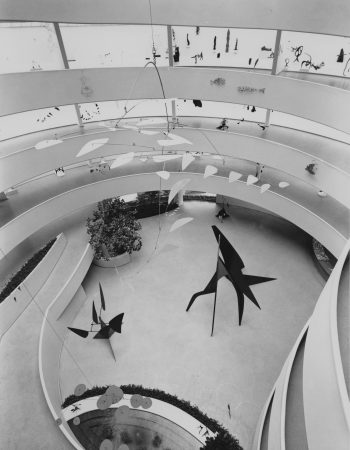


George Walter Vincent Smith Gallery, Springfield, Massachusetts. Calder Mobiles. 8–27 November 1938.
Solo ExhibitionThe Museum of Modern Art, New York. Alexander Calder: Sculptures and Constructions. 29 September 1943–16 January 1944.
Solo ExhibitionNew Gallery, Charles Hayden Memorial Library, Massachusetts Institute of Technology, Cambridge. Calder. 5 December 1950–14 January 1951.
Solo ExhibitionSolomon R. Guggenheim Museum, New York. Alexander Calder: A Retrospective Exhibition. 6 November 1964–31 January 1965.
Solo ExhibitionMusée National d’Art Moderne, Paris. Calder. 8 July–15 October 1965. Originated from the Solomon R. Guggenheim Museum, New York.
Solo ExhibitionFondation Maeght, Saint-Paul-de-Vence, France. Calder. 2 April–31 May 1969.
Solo ExhibitionWhitney Museum of American Art, New York. Calder’s Universe. 14 October 1976–6 February 1977.
Solo ExhibitionFondation Beyeler, Riehen/Basel. Alexander Calder & Fischli/Weiss. 29 May–4 September 2016.
Group ExhibitionWhitney Museum of American Art, New York. Calder: Hypermobility. 9 June–23 October 2017.
Solo ExhibitionSoon after moving to Paris in 1926, Calder created his Cirque Calder. Made of wire and a spectrum of found materials, the Cirque was a work of performance art that gained Calder an introduction to the Parisian avant-garde. He continued to explore his invention of wire sculpture, whereby he “drew” with wire in three dimensions the portraits of friends, animals, circus themes, and personalities of the day.